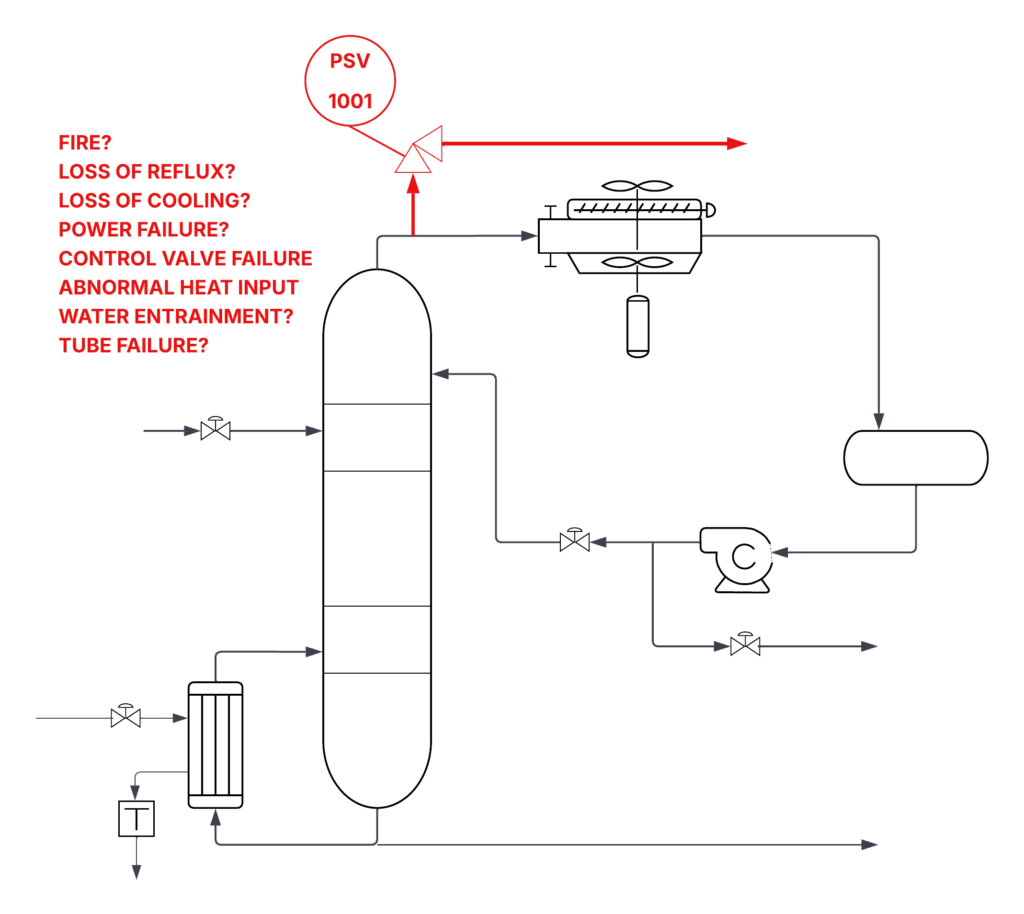An Overpressure Risk Assessment is a focused, well documented assessment of the credible overpressure scenarios for a pressure vessel. The assessment assures that the vessel has adequate protection from each scenario. In Alberta, this type of study is required by our Pressure Vessel Authority, ABSA.

There are four steps to conduct this assessment.
-
- Identify the credible overpressure scenarios. This requires a combination of plant experience (to understand which upset conditions are credible sources of energy) and expertise with thermodynamics (to understand how a new source of energy results in a credible overpressure event). Mistakes at this step often cause unnecessary work: non-credible scenarios are deemed credible.
- Calculate the required relieving rate (mass flow) for each of the credible scenarios. This step is usually straightforward. Common calculations are the flow rate through a wide open control valve and the amount of vapour generated by a specified amount of heat. You need reliable physical property data for the fluids.
- Calculate the the required size of the pressure relief device. The reference API-521 provides the formulas for standard gas and liquid relief calculations. But things get more complex if the fluid is near the critical region or two-phase.
- Assess the pressure drop at the inlet and outlet of the pressure relief device. Standard incompressible pressure drop calculations are appropriate for the inlet, and Ideal Gas Fanno flow calculations are usually appropriate for the outlet piping.
It is good engineering practice to do this work prior to a HAZOP and the commencement of Detailed Design. A small team with expert knowledge of thermodynamics, compressible pipe flow, and fluid mechanics can tackle the myriad of relevant cases and dismiss the non-credible cases.
Be confident with overpressure protection.







